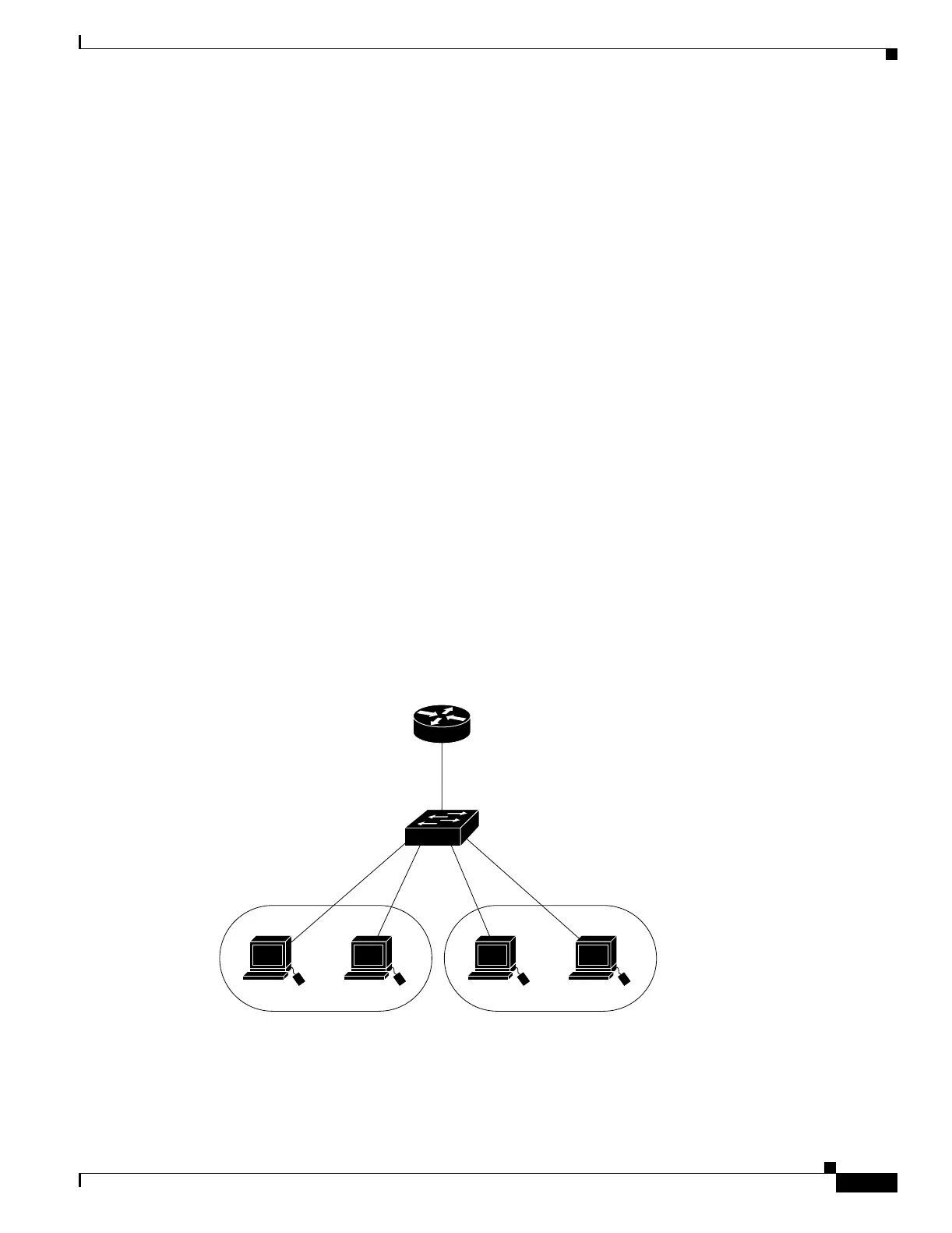9-5
Catalyst 3750 MetroSwitch Software Configuration Guide
78-15870-01
Chapter 9 Configuring Interface Characteristics
Understanding Interface Types
EtherChannel Port Groups
EtherChannel port groups provide the ability to treat multiple switch ports as one switch port. These port
groups act as a single logical port for high-bandwidth connections between switches or between switches
and servers. An EtherChannel balances the traffic load across the links in the channel. If a link within
the EtherChannel fails, traffic previously carried over the failed link changes to the remaining links. You
can group multiple trunk ports into one logical trunk port, group multiple access ports into one logical
access port, group multiple tunnel ports into one logical tunnel port, or group multiple routed ports into
one logical routed port. Most protocols operate over either single ports or aggregated switch ports and
do not recognize the physical ports within the port group. Exceptions are the DTP, the Cisco Discovery
Protocol (CDP), and the Port Aggregation Protocol (PAgP), which operate only on physical ports.
When you configure an EtherChannel, you create a port-channel logical interface and assign an interface
to the EtherChannel. For Layer 3 interfaces, you manually create the logical interface by using the
interface port-channel global configuration command. Then you manually assign an interface to the
EtherChannel by using the channel-group interface configuration command. For Layer 2 interfaces, use
the channel-group interface configuration command to dynamically create the port-channel logical
interface. This command binds the physical and logical ports together. For more information, see
Chapter 27, “Configuring EtherChannels.”
Connecting Interfaces
Devices within a single VLAN can communicate directly through any switch. Ports in different VLANs
cannot exchange data without going through a routing device. With a standard Layer 2 switch, ports in
different VLANs have to exchange information through a router. In the configuration shown in
Figure 9-1, when Host A in VLAN 20 sends data to Host B in VLAN 30, it must go from Host A to the
switch, to the router, back to the switch, and then to Host B.
Figure 9-1 Connecting VLANs with Layer 2 Switches
By using the switch with routing enabled (as a Layer 3 switch), when you configure VLAN 20 and
VLAN 30 each with an SVI to which an IP address is assigned, packets can be sent from Host A to Host
B directly through the switch with no need for an external router (Figure 9-2).
Host A
Switch
Cisco router
VLAN 20
Host B
VLAN 30
46647

